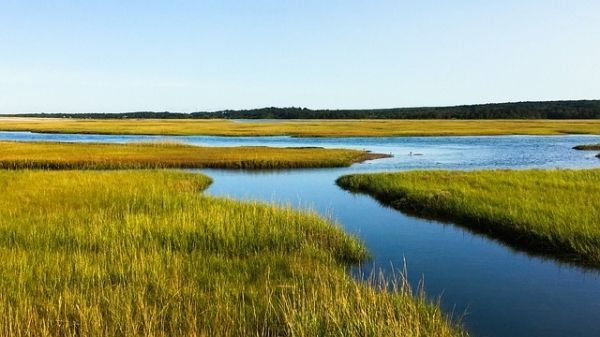These findings, recently published in the Proceedings of the National Academy of Sciences, highlight the profound importance of this marsh crab in controlling how salt marshes are responding to sea level rise, challenging the long-standing paradigm that feedbacks between water flow, sediment processes and plants alone shape salt marsh evolution and response to climate change pressures, like sea level rise.
Researchers in the Engineering School of Sustainable Infrastructure & Environment (ESSIE) within the Herbert Wertheim College of Engineering, led by associate professor Christine Angelini, Ph.D., and doctoral student Sinead Crotty found that Sesarma are accelerating the rate at which salt marsh tidal creeks lengthen in response to sea level rise, which is causing marshes to rapidly transform from expansive, contiguous grasslands to highly fractured patches of marsh.
“This crab, which excavates deep, complex networks of burrows, thrives where tidewaters rapidly flush across the marsh surface, and therefore, congregate in large numbers on the heads of tidal creeks where water flows are fastest. When they congregate in high-density fronts, they turn marsh soils into Swiss cheese as a result of all of their burrowing and overgraze marsh cordgrass,” Dr. Angelini said. “Through these activities, Sesarma is causing tidal creeks to rapidly incise across marshes, and is enabling predators, like red drum and blue crabs, to freely access the marsh, driving huge declines in the density of snails, mussels and other marsh invertebrate prey.”
Continue reading at University of Florida
Image via Pixabay, CC0 Creative Commons


